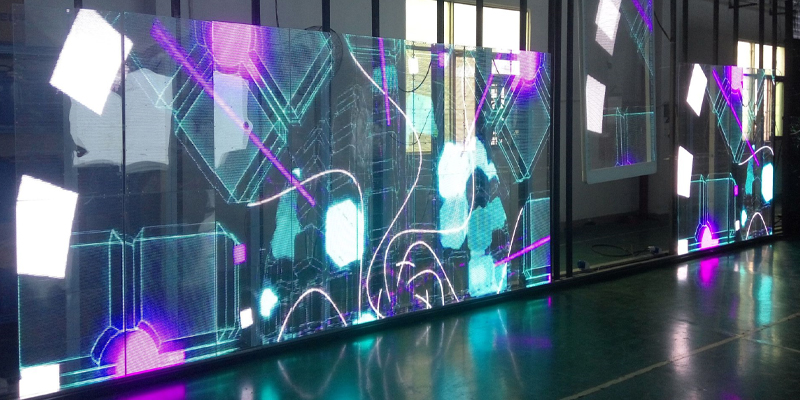The way we design our homes has evolved over the years, with a focus on aesthetics, functionality, and energy efficiency. One of the latest advancements in home design is the use of photochromic windows. In this article, we will explore the future of home design with photochromic windows for houses, understanding their benefits, installation process, and the potential they hold for transforming the way we live.
Photochromic Windows
These windows have emerged as an innovative solution that offers numerous advantages in terms of energy efficiency, UV protection, privacy, and design possibilities.
What are Photochromic Windows?
These windows, also known as smart windows or switchable windows, are glass panels that have the ability to change their tint in response to varying light conditions. These windows utilize photochromic tint film, a special coating that reacts to ultraviolet (UV) light. When exposed to UV light, the tint film darkens, reducing the amount of light and heat transmitted through the window. Conversely, when UV light diminishes, the tint film lightens, allowing more natural light to enter the space.
How do Photochromic Windows work?

The working principle behind these windows involves the use of light-sensitive molecules embedded in the tint film. These molecules undergo a chemical reaction when exposed to UV light, causing them to darken and absorb a significant portion of the incoming light. When the UV light diminishes, the molecules revert to their original state, resulting in the lightening of the tint film. This dynamic tinting capability allows photochromic windows to adapt to changing light conditions throughout the day.
The Future of Home Design with Photochromic Windows
Discover the exciting future of home design with the revolutionary technology of photochromic windows. These windows are not only functional but also offer incredible possibilities to transform your living space into a dynamic and efficient sanctuary. Let’s dive into the fascinating advancements that await us:
Smart Windows: A Smart Move for Your Home or Business
Imagine having windows that adapt to your needs, creating a comfortable and energy-efficient environment effortlessly. Smart windows are the answer. Whether you’re constructing a new building or upgrading an existing one, these windows are a game-changer. With integrated electrical wiring, smart windows seamlessly control lighting and temperature, replacing the need for costly air conditioning and lights. Experience up to 40% savings on utility costs, making them a wise investment. Hospitals, stadiums, schools, and even NASA’s Sustainability Base in California have already embraced the benefits of smart glass technology.
Chameleon Glass: Colors That Come to Life
Get ready for a colour revolution in interior design with chameleon glass. Scientists in the United States have made astonishing breakthroughs, enabling glass to change colours with a flick of a switch. It’s like magic unfolding before your eyes. These colour-changing windows add a touch of enchantment to your living space. The best part? They consume minimal energy, comparable to a simple incandescent lamp. Say goodbye to mundane colour schemes and embrace the vibrant possibilities of chameleon glass.
Smart Glass for Smarter Living
Your appliances are about to get a smart makeover, and it starts with smart glass integration. Say farewell to the traditional ice dispensers and digital clock faces in your fridge. The future brings us smart fridges with built-in tablet-style smart glass screens. From browsing recipes to checking the family calendar, this innovation will make your life easier and more enjoyable. The potential doesn’t stop there. Solar panel collecting windows are set to harness the sun’s energy, powering nearby devices such as smart speakers and TVs. It’s a step towards sustainability while enhancing the functionality of your home.
Windows with a Green Touch
Windows play a significant role in creating energy-efficient homes. In the near future, windows will do more than just let light in. Solar panel collecting windows will double as power sources for your smart devices, reducing reliance on traditional energy sources. Additionally, the obscure glass will dominate the window scene, deflecting up to 98% of outside light. This type of glass eliminates the need for expensive blinds and reduces air conditioning costs. Picture a world where your window’s light-to-dark settings can be adjusted with a smart-home system, whether you’re home or away. The future is bright, and your windows will be too.
Frosty Delights: Privacy at Your Fingertips
Privacy and style come together with the innovation of smart glass. No more binary choices between clear and frosted glass. With smart glass technology, you can switch your clear glass shower screen to frosted mode with a touch. It’s the ultimate privacy mode for your bathroom oasis. Shower areas will also feature waterproof touch screens, allowing you to control water flow, timing, and temperature effortlessly.
While some of these exciting glass innovations are still on the horizon, the future of home design with photochromic windows is bursting with potential. Embrace the possibilities and elevate your living space to new heights.
Architectural Flexibility and Versatility

These windows offer architects and designers greater flexibility in creating unique spaces. The ability to control the amount of light and heat entering a room opens up opportunities for innovative designs. From maximizing natural daylighting to creating dynamic visual effects, photochromic windows enable architectural masterpieces that captivate and inspire.
Benefits of Photochromic Windows for Houses
Photochromic windows offer several benefits that make them an excellent choice for modern home design. Let’s explore some of these advantages:
Energy Efficiency
By dynamically adjusting the amount of light and heat entering a space, these windows contribute to energy efficiency. During hot summer months, the tint film darkens, reducing the heat gain from the sun and alleviating the strain on cooling systems. In winter, when natural warmth is desired, the windows lighten, allowing sunlight to penetrate and heat the interior. This natural regulation of light and heat reduces reliance on artificial lighting and HVAC systems, leading to energy savings and lower utility bills.
UV Protection
These windows provide effective protection against harmful ultraviolet (UV) rays. The tint film blocks a significant portion of UV light, preventing it from entering the house. Prolonged exposure to UV radiation can cause fading of furniture, carpets, and artwork, as well as pose health risks to occupants. By reducing UV penetration, photochromic windows safeguard both the interiors and the occupants from these potential hazards.
Enhanced Privacy
Privacy is a crucial aspect of home design, and these windows offer a unique solution. When the tint film darkens, it acts as a privacy barrier, limiting visibility from the outside. This is especially beneficial for houses located in close proximity to neighbours or busy streets. Residents can enjoy natural light and views during the day while maintaining their privacy when needed, without the need for curtains or blinds.
Aesthetics and Design
These windows add a touch of sophistication and elegance to the overall design of a house. The ability to dynamically change the tint of the windows opens up endless design possibilities. Architects and interior designers can harness this feature to create visually stunning spaces that seamlessly integrate with the surrounding environment. Photochromic windows also allow for panoramic views, bringing the beauty of the outdoors inside while maintaining optimal lighting conditions.
Conclusion
We have covered a detailed guide on Future of Home Design with Photochromic Windows for Houses. These windows have revolutionized the way we approach home design. With their ability to adapt to changing light conditions, these windows offer numerous benefits in terms of energy efficiency, UV protection, privacy, and design possibilities. As technology continues to advance, the future holds even greater potential for integrating photochromic windows into smart homes and sustainable architectural practices. Embrace the future of home design with these windows and transform your living space into a truly remarkable and efficient sanctuary.
FAQs
Yes, These can be installed in various types of houses, including single-family homes, apartments, and commercial buildings.
The photochromic tint film is a specialized film that changes its tint based on the intensity of light. It darkens in response to UV rays and brightens when UV exposure diminishes.
While not necessary, you can still use curtains or blinds for added privacy or light control when desired.
It require regular cleaning with non-abrasive cleaners and inspection for any signs of damage.
Yes, These windows can be retrofitted into existing homes during the window replacement process.
Yes, photochromic tint film is available in various tint levels to accommodate different preferences and needs. You can choose the level of darkness that suits your requirements.
With proper maintenance, These windows can last for many years, providing long-term benefits and cost savings.





